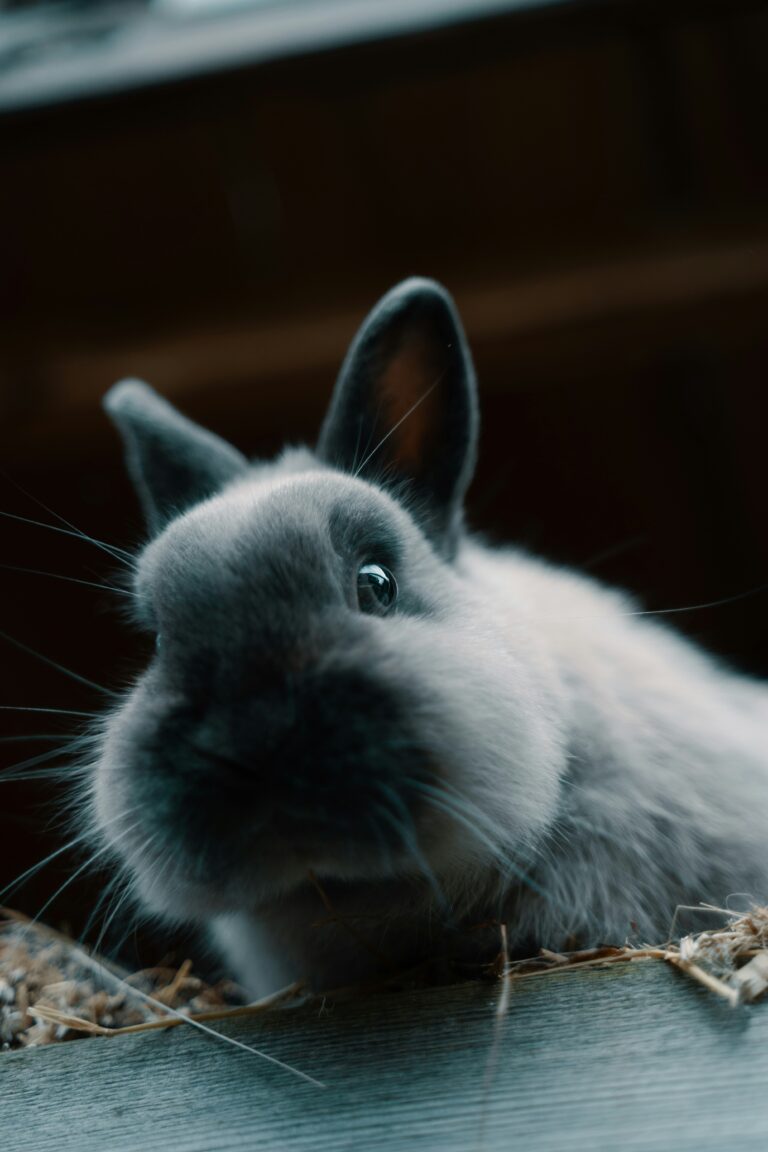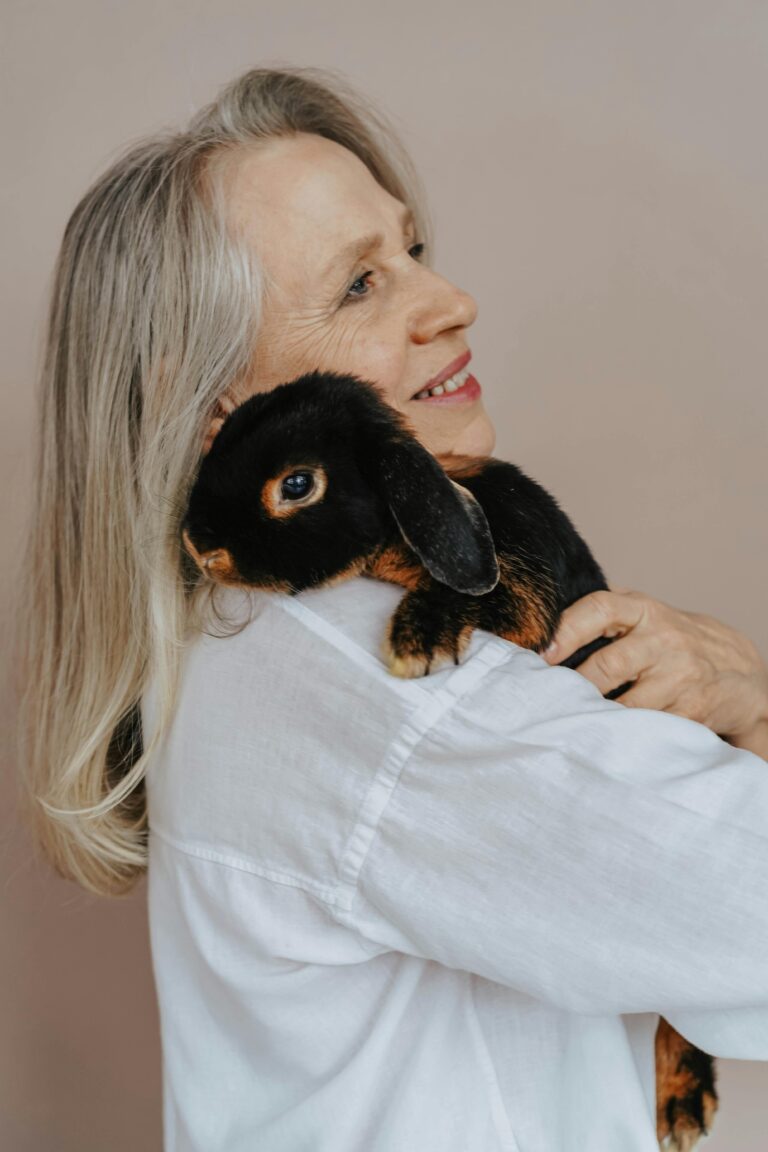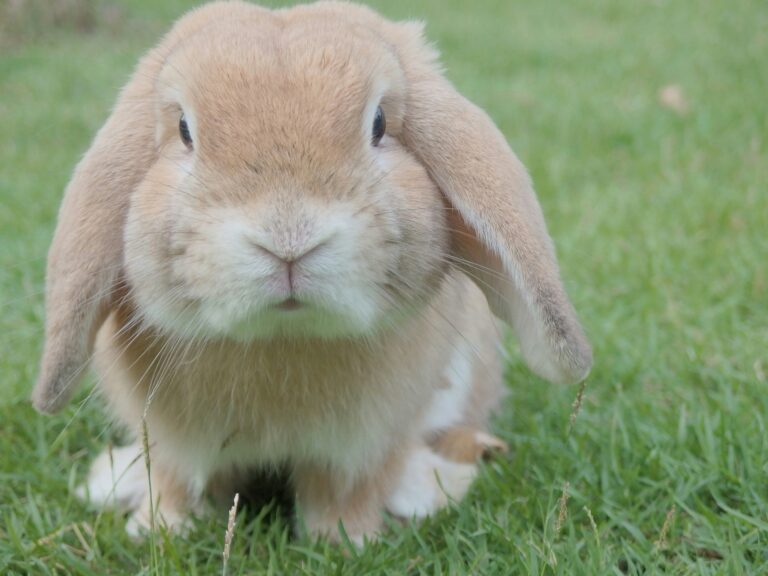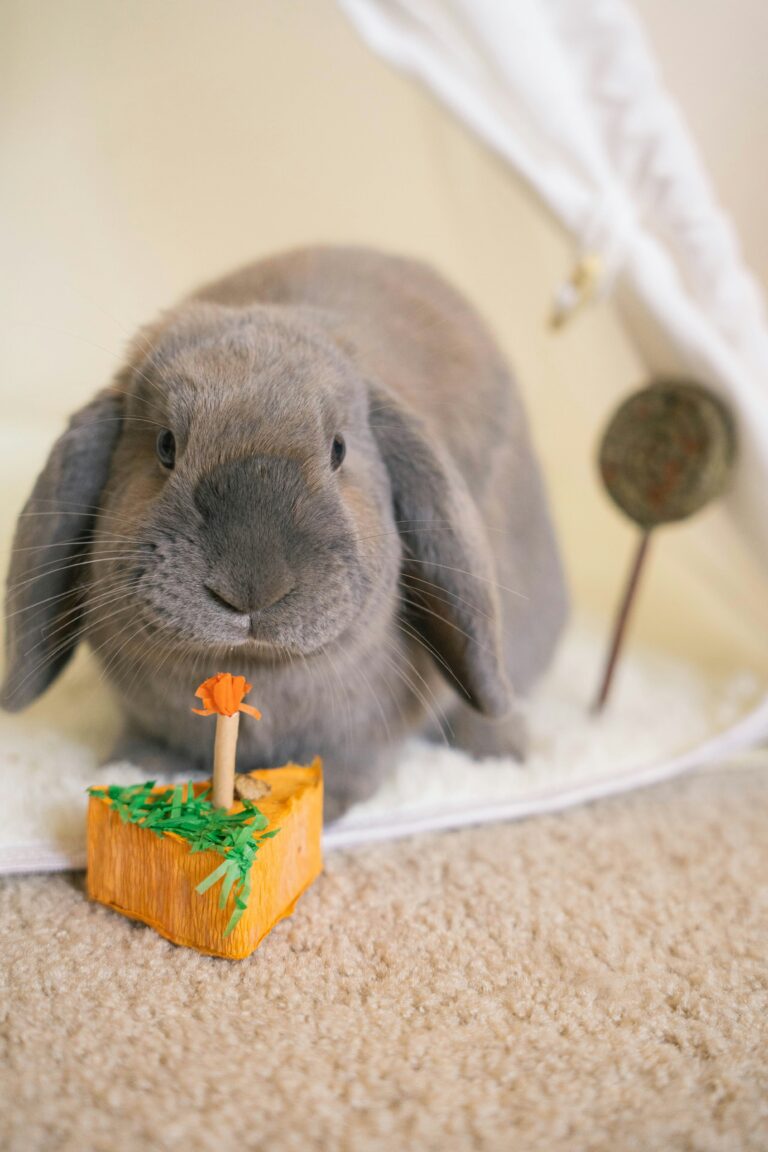Do Rabbits and Dogs Get Along?
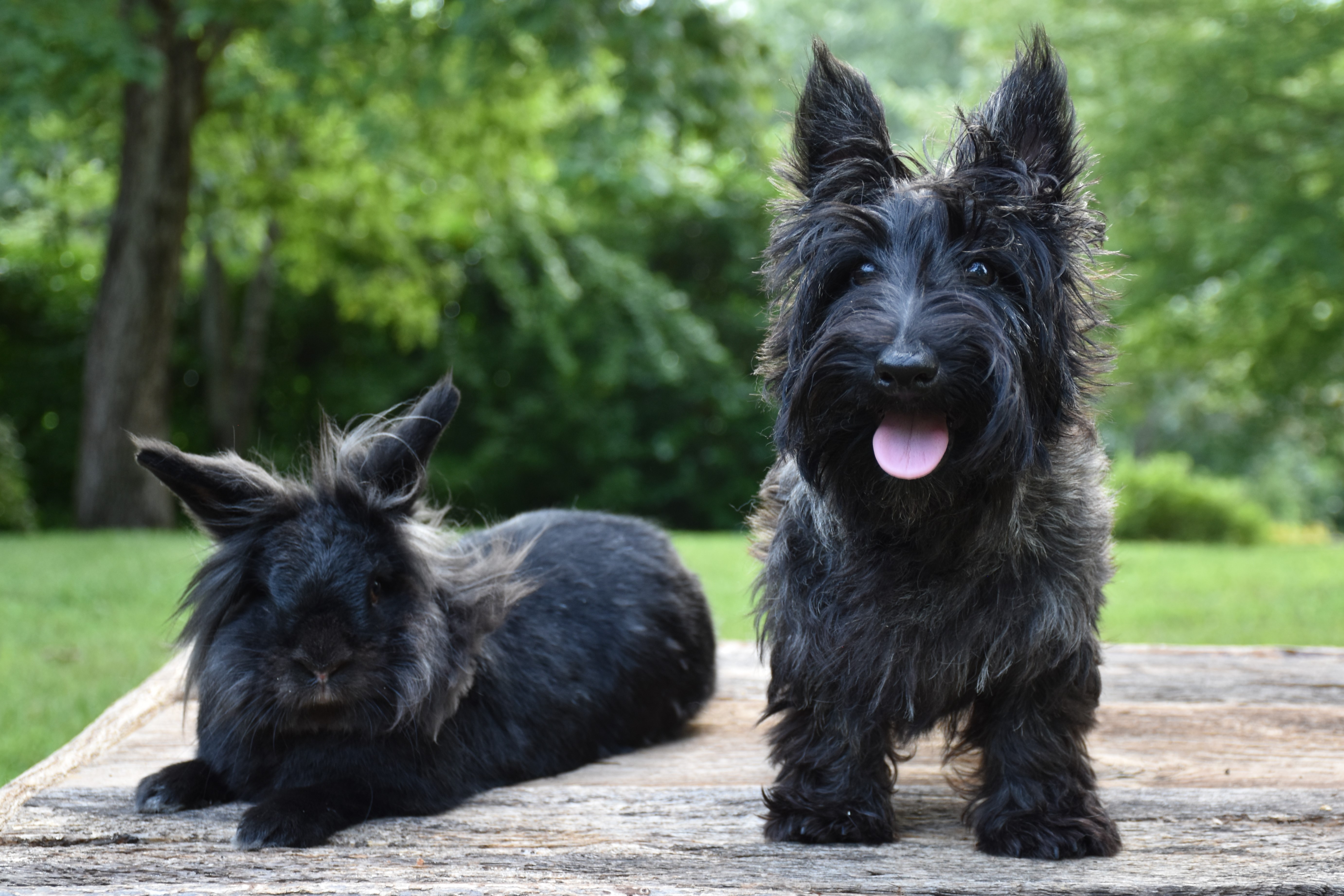
Introducing a rabbit and a dog into the same household can be an exciting yet challenging endeavor. The compatibility of these two distinct species depends on various factors, including their temperaments, breed characteristics, and the environment in which they are introduced. While it is never advisable to leave a rabbit and dog alone unsupervised, there are many instances where rabbits and dogs can get along.
In this article, we will delve into the dynamics of rabbit and dog interactions, offering insights and practical advice to foster a harmonious relationship between these pets.
Understanding Rabbit and Dog Behavior
Your Rabbit’s Natural Behavior
Rabbits are prey animals, and their behavior reflects their instincts to avoid predators. They are naturally cautious, timid, and may react skittishly to sudden movements or loud noises. Understanding these instincts is crucial when introducing them to dogs. Rabbits communicate through body language, using subtle signals such as ear positions, nose twitches, and thumping. Being aware of these signals can help you gauge their comfort level during interactions with dogs.
Your Dog’s Natural Behavior
Dogs are predators by nature, and their behavior can be quite different from rabbits. They may exhibit strong hunting instincts, particularly in certain breeds. A rabbit’s natural prey instincts might cause them to quickly flee, but this can easily trigger a dog’s instinct to chase and possibly kill. Recognizing and managing these instincts is essential for ensuring the safety and well-being of both pets. Dogs communicate through body language and vocalizations. Their tail wagging, ear positions, and barking can indicate excitement, curiosity, or aggression. Understanding these signals helps in monitoring their interactions with rabbits.
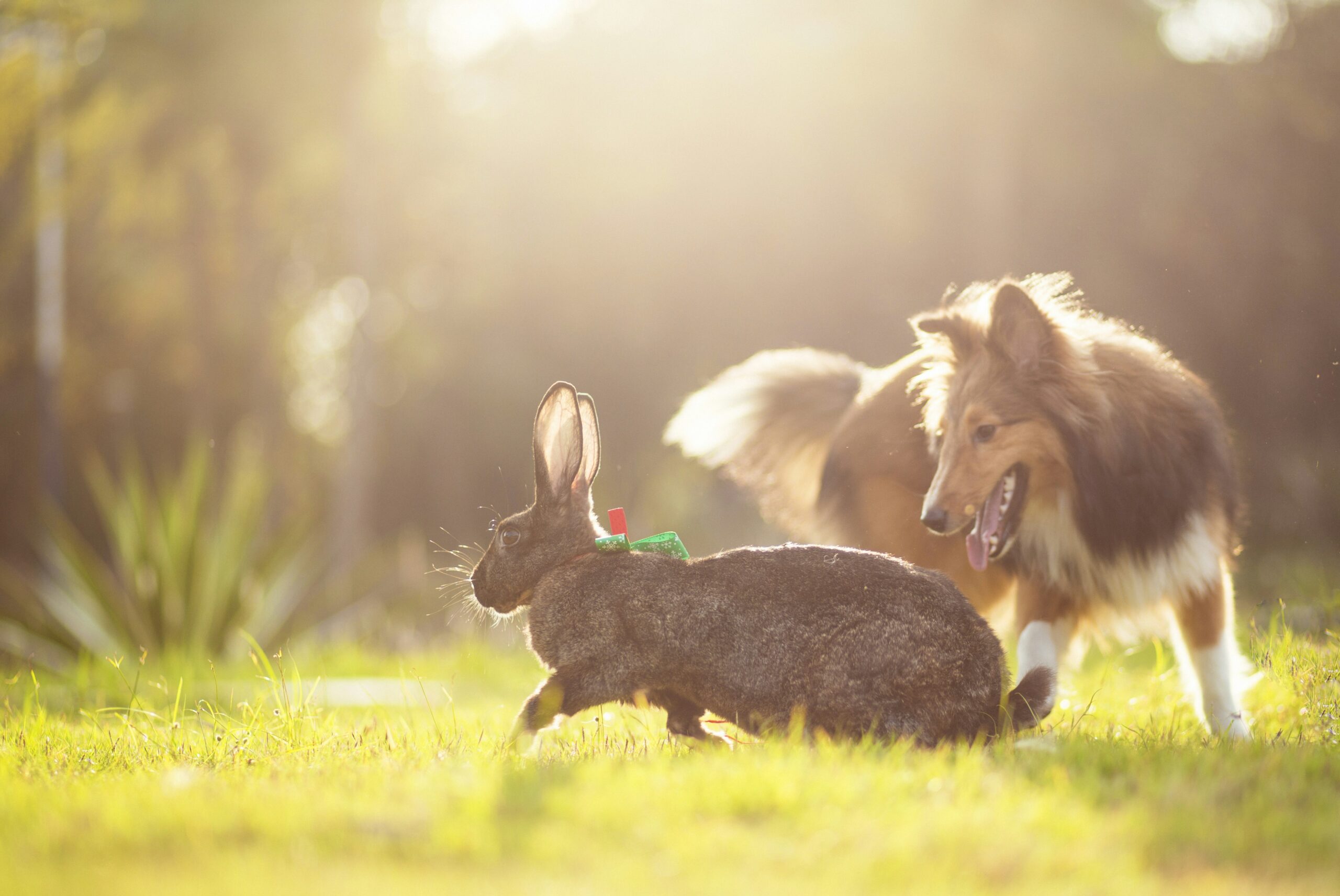
Factors Influencing Rabbit and Dog Compatibility
Temperament of the Dog
The individual temperament of a dog plays a significant role in its ability to get along with a rabbit. Gentle, calm, and well-trained dogs are more likely to coexist peacefully with rabbits compared to high-energy or aggressive dogs. Dogs that have been socialized with small animals from a young age are often better equipped to interact with rabbits. Training and positive experiences can significantly influence a dog’s behavior towards rabbits.
Breed Characteristics
Certain dog breeds are more predisposed to hunting and chasing small animals, making them less suitable for living with rabbits. Breeds with a strong prey drive, such as terriers and hounds, may pose a higher risk to rabbits. On the other hand, breeds known for their gentle nature and lower prey drive, such as Golden Retrievers and Cavalier King Charles Spaniels, are generally more suitable for cohabitation with rabbits.
Rabbit’s Personality
Just as dogs have individual temperaments, rabbits also have unique personalities. Some rabbits may be more outgoing and confident, while others might be shy and easily frightened. Understanding your rabbit’s personality can help in managing interactions with dogs. Confident rabbits may be more willing to explore and interact with dogs, while timid rabbits may require more time and patience.
Preparing for the Introduction
Creating a Safe Environment
Before introducing your rabbit and dog, ensure you have a safe and controlled environment. Use baby gates, exercise pens, or separate rooms to create barriers that allow them to see and smell each other without direct contact. Providing safe spaces for both pets is essential. For rabbits, ensure they have hiding spots and elevated areas where they can feel secure. For dogs, designate a space where they can retreat and calm down if they become overly excited.
Gradual Introduction Process
A gradual introduction is key to a successful relationship between rabbits and dogs. Start with short, supervised sessions where they can observe each other from a distance. Gradually decrease the distance over time as they become more comfortable. Patience is critical during this process. Rushing the introduction can lead to stress and negative associations. Allow both pets to set the pace and ensure that each interaction ends on a positive note.
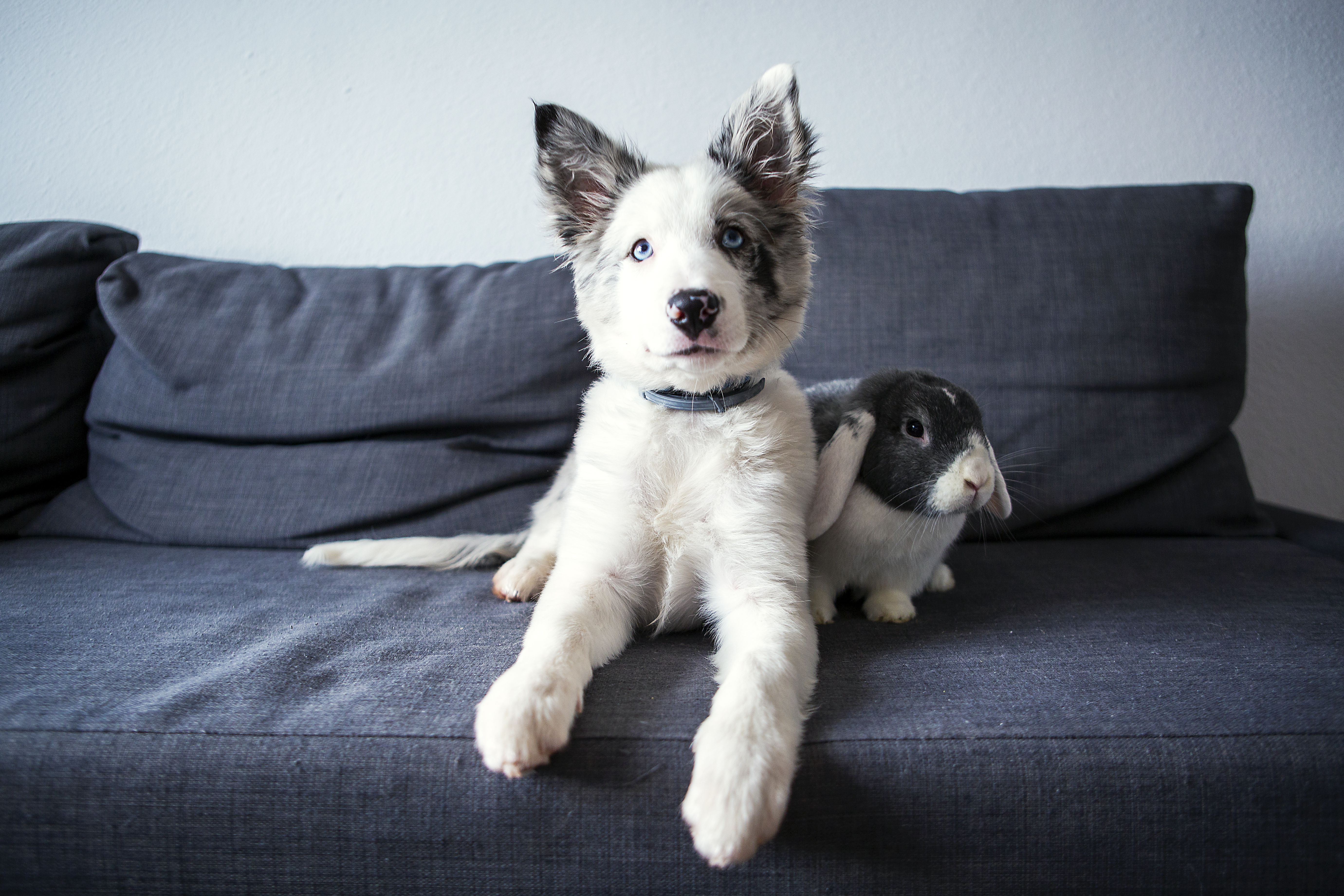
Initial Meetings and Supervision
First Impressions Matter
The first meeting between your rabbit and dog sets the tone for their future interactions. Keep the initial meetings brief and positive, rewarding both pets for calm behavior. Avoid forcing interactions and allow them to approach each other at their own pace. Use treats and praise to reinforce positive behavior. Ensure that the environment is calm and free from distractions, creating a conducive atmosphere for a positive first meeting.
Monitoring Body Language
Closely monitor the body language of both your rabbit and dog during interactions. Look for signs of stress, fear, or aggression. Common signs of discomfort in rabbits include thumping, hiding, or freezing, while dogs may growl, bark, or show excessive excitement. Understanding these signals can help you intervene before a situation escalates. If either pet shows signs of distress, calmly separate them and try again later.
Building Trust and Positive Associations
Using Positive Reinforcement
Positive reinforcement is a powerful tool in fostering a positive relationship between rabbits and dogs. Reward calm and friendly behavior with treats, praise, and affection. This helps both pets associate each other’s presence with positive experiences. Consistency is key in reinforcing desired behaviors. Over time, both pets will learn that being calm and respectful around each other results in positive outcomes.
Consistent Training
Consistency in training is crucial for dogs, especially when teaching them to coexist peacefully with rabbits. Commands such as “leave it” or “stay” can be very useful in managing interactions and ensuring the safety of both pets. Training sessions should be short, frequent, and positive. Incorporate commands into everyday activities to reinforce learning and create a structured environment for interactions.
Potential Challenges and Solutions
Dealing with Prey Drive
Managing a dog’s prey drive is one of the biggest challenges in fostering a rabbit-dog relationship. Training and supervision are essential. In some cases, professional training may be necessary to address high prey drive behaviors. Desensitization techniques can also be effective. Gradually exposing the dog to the rabbit in a controlled manner can help reduce the intensity of the prey drive over time.
In some cases (especially when introduced to a rabbit as an adult) your dog’s prey drive may be too strong to safely allow interactions with a rabbit. If this happens don’t blame yourself, but you should take care to keep them separated for the safety of your rabbit.
Addressing Fear and Anxiety
Both rabbits and dogs can experience fear and anxiety during the introduction process. Creating a calm environment, speaking with a calm tone, and providing plenty of hiding spaces for rabbits can help alleviate stress. Consider holding your rabbit and allowing them to burrow in a blanket for the first meeting. This can help prevent the instinct to run and hide triggering your dog’s instinct to chase. Be sure to offer your dog lots of praise and reassurance for calm behavior! Ensuring that both pets feel safe and secure is paramount to reducing fear and anxiety.
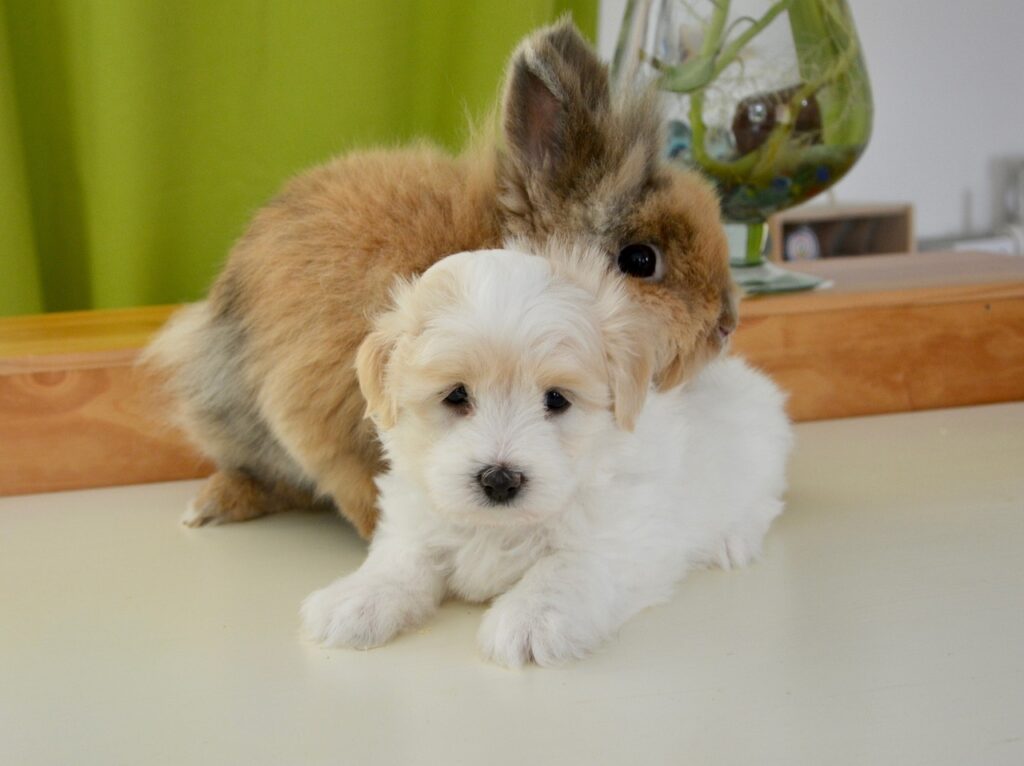
Creating a Peaceful Coexistence
Establishing Boundaries
Setting clear boundaries is essential for a peaceful coexistence. Designate separate areas for your rabbit and dog, ensuring each has its own space to retreat to when needed. Respecting these boundaries helps prevent conflicts and promotes a sense of security. Physical barriers, such as baby gates, can help create these boundaries and provide a visual reminder for both pets.
Maintaining Routine
Rabbits and dogs thrive on routine. Maintaining a consistent schedule for feeding, playtime, and exercise helps both pets feel secure and reduces the likelihood of stress-induced behaviors. A predictable routine can also help manage interactions and ensure that both pets receive adequate attention and care.
Long-Term Considerations
Ongoing Supervision
Even after your rabbit and dog have established a relatively peaceful relationship, ongoing supervision is necessary. Always monitor their interactions, especially during playtime, to prevent any sudden changes in behavior that could lead to conflicts. Your rabbit can easily trigger a prey drive that you your dog has never shown before. Even your dog just being playful can also cause injury to your rabbit.
Health and Well-being
Regular veterinary check-ups for both your rabbit and dog are important to ensure their health and well-being. Address any health issues promptly, as illness or discomfort can affect their behavior and interactions. Ensuring that both pets are healthy and comfortable can prevent behavioral issues that may arise from pain or illness.
Common Myths About Rabbit and Dog Interactions
“Dogs and Rabbits Can Never Get Along”
While it is true that some dogs and rabbits may never get along, many can coexist peacefully with the right approach. Understanding the individual personalities and behaviors of both pets is key to fostering a positive relationship. With patience, training, and supervision, many rabbits and dogs can learn to coexist peacefully.
“Rabbits and Dogs Will Instantly Be Friends”
Expecting an instant friendship between a rabbit and a dog is unrealistic. Building a trusting relationship takes time, patience, and careful management of their interactions. Avoid setting unrealistic expectations and be prepared for gradual progress. Celebrate small milestones and remain patient throughout the process. Also keep in mind that in some cases no matter what you do it might not work out.
Benefits of a Rabbit and Dog Friendship
Companionship
A successful rabbit-dog relationship can provide companionship for both pets. Dogs and rabbits can engage in gentle play and even cuddle together once they have established trust and comfort with each other. Companionship can enrich the lives of both pets, providing mental and emotional stimulation.
Mental Stimulation
Interacting with a different species can provide mental stimulation for both rabbits and dogs. This can help prevent boredom and promote overall well-being. Engaging in activities such as games or gentle play can keep both pets entertained and mentally sharp.

Tips for Fostering a Positive Relationship
Patience and Persistence
Patience and persistence are crucial when fostering a relationship between rabbits and dogs. Progress may be slow, but consistent positive reinforcement and supervision can lead to a successful coexistence. Avoid rushing the process and be prepared for setbacks. Persistence and a positive attitude can make a significant difference.
Understanding Each Pet’s Needs
Understanding the unique needs of both your rabbit and dog is essential. Providing for their physical, emotional, and mental well-being helps create a harmonious living environment. Ensure that both pets receive adequate exercise, mental stimulation, and affection to meet their individual needs.
Frequently Asked Questions
Can all dogs and rabbits get along?
No. Not all dogs and rabbits will get along. Success depends on the individual personalities and behaviors of both pets, as well as the approach taken to introduce and manage their interactions. Careful consideration and management are essential for fostering a positive relationship.
How long does it take for a rabbit and dog to get along?
The time it takes for a rabbit and dog to get along varies. Some may become comfortable with each other in a few weeks, while others may take months or even longer. Patience and consistency are key. Allow both pets to progress at their own pace and avoid forcing interactions.
What should I do if my dog shows aggression towards my rabbit?
If your dog shows aggression towards your rabbit, separate them immediately and seek professional training for your dog. Safety should be the top priority. Addressing aggressive behavior early is crucial to preventing harm and fostering a positive relationship.
Can rabbits and dogs play together?
Rabbits and dogs can play together, but interactions should always be supervised. Ensure the play is gentle and that both pets are comfortable. Monitor body language closely and intervene if either pet shows signs of stress or discomfort.
What breeds of dogs are best suited to live with rabbits?
Breeds with a calm temperament and lower prey drive, such as Golden Retrievers, and some small breeds like Cavalier King Charles Spaniels and Maltese, are generally better suited to live with rabbits. Individual temperament is more important than breed, so assess each dog’s behavior and training.
How can I tell if my rabbit is stressed by the dog?
Signs of stress in rabbits include thumping, hiding, excessive grooming, loss of appetite, and changes in behavior. If you notice these signs, separate your rabbit from the dog and create a calm environment. Addressing stress promptly is essential for maintaining the well-being of your rabbit.
Conclusion
Fostering a positive relationship between rabbits and dogs requires careful planning, patience, and understanding of each pet’s behavior and needs. By creating a safe environment, introducing them gradually, and using positive reinforcement, you can help your rabbit and dog coexist peacefully and even form a lasting bond. Remember, every pet is unique, and the key to success lies in respecting their individuality and taking the time to build trust and comfort. Keep in mind that in some cases your rabbit and dog may never be able to coexist safely, and have a plan for in place for this possibility.


